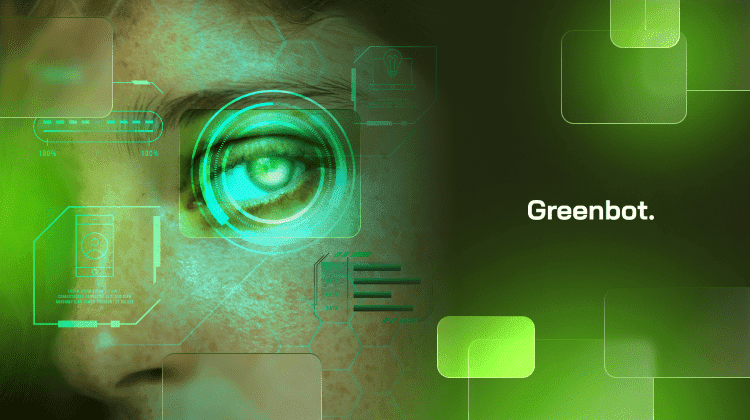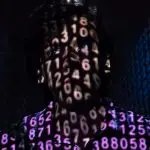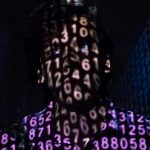
How do self-driving cars detect objects and navigate safely? How does facial recognition identify people or software scan text with precision? The answer lies in computer vision, a branch of AI that replicates human vision capabilities.
Computer vision powers many technologies we use today, from image and optical character recognition, and medical imaging to augmented reality (AR) and virtual reality (VR).
In this article, we’ll break down what computer vision is and explain how it works, its applications, and why it’s so impactful
Understanding Computer Vision

Computer vision has been around since the 1960s but was limited by weak computing power. Unlike digital image processing, its goal is to understand 3D structures and interpret entire scenes from images, as noted by Richard Szelisk.
Major advancements have shaped the field. The Hough transform allowed detecting lines and shapes in images. Machine learning improved accuracy, and deep learning revolutionized the field. Now, machines can learn complex patterns and better analyze visual data.
Computers today can recognize objects, track movements, and complete complex tasks. With AI, machine learning, and advanced algorithms, they “see” the world quickly and with automation.
Image recognition helps machines classify and identify objects. Tasks range from recognizing faces to detecting tumors in medical scans. Training on large datasets makes computer systems more accurate over time.
Motion tracking on the other hand enables machines to follow objects in real time. Autonomous cars, for instance, use it to detect pedestrians, vehicles, and traffic signs, ensuring safe navigation.
What is Computer Vision?
Computer vision is a branch of artificial intelligence that enables computers to mimic human vision. It allows computers to identify and understand objects and people in images and videos. Computer vision captures visual data from devices like cameras. It then uses machine learning models and algorithms to process the data.
These computer vision models, like large language models (LLMs), are trained on labeled datasets to recognize patterns in objects, faces, or scenes. These models act like the human brain. They process and interpret image data for analysis or decision-making.
Why is Computer Vision Important?
Computer vision lets machines interpret visual data for decision-making. It automates tasks usually done by the human visual system. For example, identity verification systems relieve human strain by automating station identity checks. In healthcare, it helps make disease and injury detection more straightforward and accurate.
In short, computer vision is advancing how technology makes our daily lives easier and more efficient.
How Does Computer Vision Work?
Computer vision uses algorithms to process visual data. It analyzes and interprets the data, and then produces outputs. Here’s a breakdown of how it works:
Input: Image or Video Data Collection
The first step in many computer vision applications is collecting visual data using cameras, sensors, or imaging devices. These tools capture raw images or videos, similar to how the human eye works, but mechanically. The data is gathered in real-time, enabling continuous analysis and updates.
Preprocessing
Once visual data is captured, it is cleaned and prepared for analysis. This step removes noise, adjusts lighting, and enhances image quality. Preprocessing ensures the data is clear and usable, improving the system’s accuracy. Algorithms like Sobel filters or Canny edge detection focus on key features.
Feature Detection and Pattern Recognition
The image is then sent to a processing system, like a computer or a machine learning model. Convolutional Neural Networks (CNNs) use algorithms to detect features such as shapes, textures, edges, or colors. These features help the system identify objects, faces, or other important elements in the image or video.
Model Training and Prediction
AI models are trained on large datasets to recognize and classify images or videos. The system learns to link specific patterns with objects or actions during training. Once trained, the model can analyze new image data, classify objects, and predict what’s happening in a scene based on what it has learned. For interpretation and detection, these models compare patterns in new data with the ones they learned during training. This helps them make sense of the information.
Real-Time Decision Making
The system uses visual data to make decisions instantly. In self-driving cars and robotics, this means detecting objects, avoiding obstacles, or following a path. Quick data processing allows the system to react to its environment in real time.
Key Techniques in Computer Vision

Let’s look at some standard techniques used in computer vision systems.
Image Acquisition and Preprocessing
Before any meaningful analysis can be performed, the first step in computer vision is acquiring and preparing the images. This involves several key steps:
- Image Capture: Digital images are captured using cameras, scanners, or sensors. The quality and resolution of the images depend on the hardware used.
- Normalization: Standardizing images to a consistent format, size, and resolution for uniform processing.
- Noise Reduction: Using filters to remove unwanted artifacts or distortions. This ensures more precise and reliable data for analysis.
- Color Space Conversion: Depending on the application, this process transforms images into different color models, such as grayscale, HSV, or RGB.
Feature Extraction and Image Segmentation
Feature extraction and segmentation are vital. They break down visual data into meaningful, analyzable parts.
Steps:
1. Feature Detection: Algorithms identify key points, edges, and patterns that describe the image, such as textures or shapes.
- Example methods: SIFT (Scale-Invariant Feature Transform) and HOG (Histogram of Oriented Gradients).
2. Segmentation: The image is divided into segments or regions, typically by:
- Thresholding: Assigning pixels to segments based on intensity.
- Edge-Based Segmentation: Using boundaries and edges to define objects.
- Clustering: Algorithms like K-means group similar pixels.
3. Dimensionality Reduction: Large datasets are condensed using techniques like PCA (Principal Component Analysis) to retain essential features.
Object Detection and Recognition
Object detection identifies and classifies objects in an image.
Steps:
- Region Proposal: Algorithms detect Regions of Interest (ROIs) where objects might be. Techniques like Selective Search, R-CNN, and YOLO handle this quickly and effectively.
- Feature Extraction: Visual features are extracted from ROIs. For example, a car’s features, like wheels or shape, are represented as data for recognition.
- Classification: Deep learning models assign labels to objects. Models like ResNet, Inception, and MobileNet are highly accurate. Transformers like Vision Transformer (ViT) are also becoming widely used.
Finally, algorithms handle localization and post-processing to refine results.
3D Vision and Spatial Analysis
3D vision enhances computer vision by interpreting depth and spatial relationships. It simulates how humans perceive the world.
Steps:
1. Stereo Vision: Captures images from multiple angles to compute depth information.
- Applications: Autonomous vehicles, AR/VR systems.
2. Depth Sensing: Sensors like LiDAR or structured light measure the distance of objects.
3.Reconstruction: 3D models of environments or objects are created using input from multiple perspectives.
4. Motion Tracking: Optical flow algorithms detect changes in spatial position over time.
5. Spatial Understanding: Scene parsing algorithms analyze object placement and interaction, aiding navigation or robotic manipulation.
Computer Vision Models and Frameworks
Several AI models power computer vision systems depending on the application, but here are the most popular ones:
Convolutional Neural Networks (CNNs)
Convolutional Neural Networks (CNNs) help process image data. These computer vision models are trained on labeled datasets. They learn to recognize objects, faces, and scenes by finding patterns in layers, like convolution and pooling. Their ability to identify visual features makes them a core part of computer vision.
Region-based CNNs (R-CNNs)
R-CNNs detect objects by identifying and classifying regions of interest in an image. They use region proposals and feature extraction to locate and label objects. These models are often used in facial recognition and autonomous driving.
Generative Adversarial Networks (GANs)
GANs use two networks: a generator that creates images and a discriminator that evaluates them. They compete to produce realistic images. GANs also do tasks like style transfer, super-resolution, and generating synthetic datasets.
That said, here is a short comparison of the computer vision models covered above:
| Model/Framework | How It Works | Example Products | Use Cases |
| Convolutional Neural Networks (CNNs) | Processes image data by learning patterns through convolutional layers | Google Photos, Adobe Photoshop, Snapchat | Object classification, facial detection, and image segmentation |
| Region-based CNNs (R-CNNs) | Identifies and classifies regions of interest in images | Tesla Autopilot, Amazon Rekognition | Object detection in autonomous vehicles security systems |
| Generative Adversarial Networks (GANs) | Competes between two networks to create realistic synthetic images | NVIDIA GauGAN, DeepArt, Runway ML | Image generation, style transfer, super-resolution |
Applications of Computer Vision Across Industries
Computer vision applications now serve many industries. They simplify tasks and boost efficiency.
Healthcare
Computer vision transforms healthcare by enhancing medical imaging, diagnostics, and treatment planning. It detects diseases like cancer from X-rays or MRIs and assists in surgeries with precision tools. For example, IBM Watson Health finds patterns in medical images. Butterfly iQ provides portable ultrasound solutions. Robotic systems like the da Vinci Surgical System rely on their computer vision capabilities to improve surgical accuracy.
Manufacturing
In manufacturing, computer vision automates tasks and ensures quality. It spots defects in products during production. It’s also used for predictive maintenance to prevent breakdowns. Systems like Cognex VisionPro handle defect detection, while Siemens MindSphere monitors equipment health. Robotics by Fanuc integrates computer vision solutions for precise assembly processes, making manufacturing more efficient.
Autonomous Vehicles
Self-driving cars use various computer vision algorithms to analyze road conditions, detect objects, and read traffic signs. These systems ensure safe navigation by identifying drivable and non-drivable zones. Tesla Autopilot uses computer vision for highway driving. Waymo focuses on complex city navigation, while Cruise specializes in urban self-driving.
Agriculture
Computer vision technology is transforming agriculture through improved crop management and precision farming. Drones like DJI Agras monitor crop health and detect diseases. Blue River’s See & Spray system applies pesticides only where needed, reducing waste. John Deere uses vision technology for sorting and harvesting, boosting farming productivity.s.
Retail and Security
Retailers use computer vision for inventory management and enhanced customer experiences. Amazon Go uses it for cashier-less shopping by tracking items selected by customers. Security systems like Verkada rely on high-resolution image processing for surveillance. Fraud detection tools analyze visual data to prevent identity theft and unauthorized access.
Emerging Trends in Computer Vision
Real-Time Computer Vision
Real-time computer vision enables instant analysis and action. It powers facial recognition, autonomous vehicles, and live video surveillance. These systems process visual data as it is captured. Tools like YOLO (You Only Look Once) and OpenCV provide low-latency, high-speed performance. This allows them to work efficiently in fast-paced, real-time environments.
Edge Computing in Vision AI
Edge computing enhances vision AI by processing data locally instead of in the cloud. This reduces latency, improves privacy, and speeds up decision-making. It is especially useful in remote or network-constrained areas. Devices like NVIDIA Jetson and Google Coral enable vision AI on edge hardware. They support applications in smart cameras, industrial automation, and augmented reality.
Challenges and Limitations of Computer Vision
Like any AI technology, computer vision has its challenges and limitations.
Data Privacy and Ethical Concerns
Technologies like facial recognition raise serious privacy and ethical issues. Tools such as deepfakes and surveillance systems can be misused. They may track individuals without consent or manipulate images unethically. These concerns show a need for strong AI ethics guidelines. They are vital to ensure responsible use of computer vision and protect personal privacy.
Computational Requirements
Computer vision models need a lot of resources. Tasks like image processing, object detection, and deep learning require powerful hardware. GPUs and servers can be expensive, making these systems costly to run. High computational demands also limit real-time applications, especially on low-power devices
FAQs
What is computer vision in AI?
Computer vision helps computers understand visual data, like images and videos. It mimics how humans see and interpret the world.
How does computer vision differ from image processing?
Both work with visual data, but their goals differ. Computer vision focuses on understanding the data. Image processing enhances or manipulates it.
What industries use computer vision the most?
Industries like healthcare, automotive, retail, manufacturing, and security often rely on computer vision.
What is computer vision used for?
It is used for tasks like: object identification and facial recognition, autonomous driving, medical imaging, and video analysis.
Is computer vision an AI?
Yes, computer vision is a branch of AI that helps machines understand and interpret visual information
Conclusion
Computer vision is a crucial part of artificial intelligence. It enables machines to interpret visual data in ways similar to humans. Alongside natural language processing (NLP), it helps machines understand human language while mimicking human vision.
Computer vision impacts many industries. It is used in object recognition, medical imaging, and autonomous vehicles. It is a key technology driving innovation and efficiency.
As AI evolves, computer vision will become even more important. Its ability to process visual data unlocks new possibilities for automation and transformation. This will improve how we interact with technology and enhance our daily lives.























